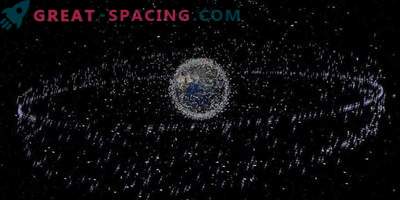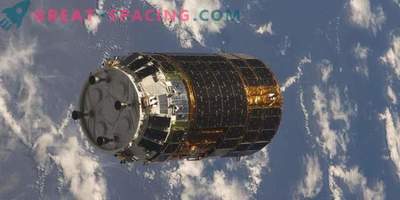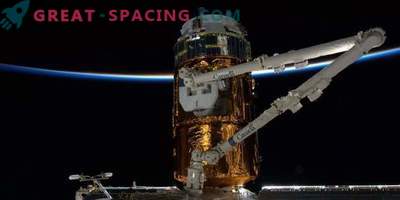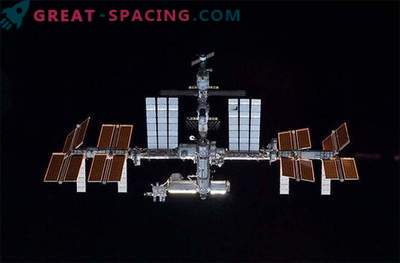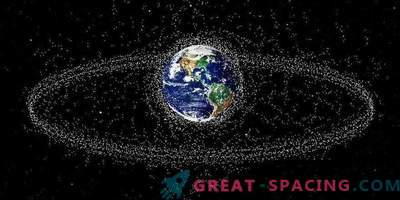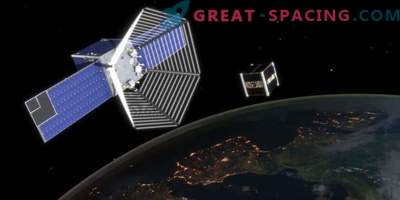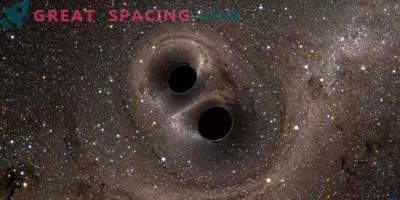
The International Space Station may soon be armed with a laser in order to shoot at orbital debris.
This idea can lead to the fact that satellites will be equipped with laser guns in order to get rid of space debris, which causes a lot of trouble.
NASA researchers suggest that there are about 3,000 tons of space debris in Earth's Earth orbit, including abandoned satellites, missile bodies, as well as parts and debris resulting from the collision of various objects. Hitting even debris can be disastrous, as it can reach speeds of around 22,370 miles per hour (36,000 km / h).
The problem of space debris with each passing year becomes more and more urgent, as more and more spacecraft and ships are sent into space. Moreover, small particles can break loose from large pieces of debris as a result of shocks and collisions. Such particles may also collide with other objects in orbit and cause their destruction.
Most spacecraft, including the International Space Station, can withstand the impact of debris particles smaller than 0.4 inches (1 centimeter). In any case, ground-based radars show that more than 700,000 debris of more than 0.4 inches in size are in Earth orbit. Although items larger than 4 inches (10 centimeters) are too large for astronomers not to notice, debris measuring 0.4–4 inches (1 to 10 centimeters) is much harder to notice. Now scientists suggest that the EUSO space observatory will be installed on the ISS in 2017 using the Japanese module. It can seriously help in the detection of dangerous garbage. In addition, a powerful laser can then destroy space debris.
“Thus, the telescope of the space observatory, designed to detect cosmic radiation, can be used in this project,” said Toshikatsu Ebisuzaki, an astrophysicist, chief researcher at the Institute of Physical and Chemical Research (RIKEN).
The EUSO space observatory was originally designed to detect ultraviolet radiation, which is produced by high-energy cosmic rays that enter the atmosphere at night. Scientists believe that a wide range of high-power optics will also help detect high-speed garbage near the International Space Station.
As soon as EUSO notices the approaching debris, a laser with a coherent amplification (CAN) network destroys the debris. A CAN laser consists of small lasers that together generate one powerful laser beam. Today, this device is under development.
Scientists use a laser to evaporate a thin film on the surface of a garbage. As a result, high-speed plasma will act as a rocket plume. Thus, the garbage falls and burns in the atmosphere of the Earth. A full-scale version of this system will be charged with a 100,000-watt ultraviolet laser that can produce up to 10,000 pulses per second, each taking up one tenth of one billionth of a second. Researchers believe that such a system can destroy debris at a distance of 60 miles (100 kilometers), while the laser requires a 17-pound (8 kilogram) lithium-ion battery.
Scientists plan to deploy a small test version of such a system at the International Space Station. It will consist of a miniature version of the EUSO and a prototype 10-watt UV CAN laser firing up to 100 pulses per second. A RIKEN representative noted that the mini-EUSO telescope was officially confirmed as a project at the International Space Station. Approximately it will be launched in 2017-2018, but the laser is still at the development stage.
If the trial and full-scale versions are successful, the researchers plan to develop a satellite designed to destroy space debris. The satellite will be equipped with a 500,000-watt UV CAN laser, which can generate up to 50, 000 pulses per second. Scientists have calculated that the satellite will be able to destroy one particle of debris every five minutes, or 100, 000 particles - annually. Most debris is concentrated at an altitude of about 500 miles (800 kilometers). The researchers suggest that the satellite can start from a height of 620 miles (1,000 km) and then gradually descend 6 miles (10 kilometers) every month. Thus, after 50 months, he will remove the most troublesome garbage at the level of 310-620 miles (500 and 1 000 kilometers).
"We were finally able to find a cure for the accumulation and spread of space debris," said Ebisuzaki.
"The main problem for today is finance," added Ebisuzaki. "There are some technical difficulties, but the main issue is to find funding for the continuation of development and launch," said the Japanese.
Scientists presented the results of their research on March 13 in the journal Acta Astronautica.



